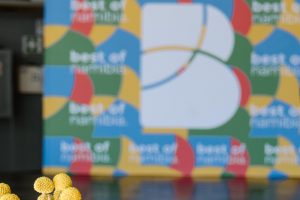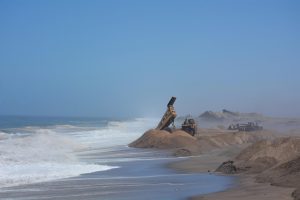
Debmarine Namibia Champions Future Innovators
Debmarine Namibia proudly sponsors the 2025 National Science Fair, Quiz, and Mathematics Olympiad, inspiring learners nationwide to pursue STEAM careers and drive innovation.

By Cerina Bezuidenhout Haasbroek
Namibia offers sun-drenched soil, wild landscapes and a rich tapestry of traditional foods. Yet in a world of packaged snacks and imported supplements, we often forget the healing power of what is already grown in our soil and served in our kitchens.
As a functional wellness coach, I like to remind women: you do not need exotic powders or overpriced pills to feel better. You need to return to the wisdom of nutrient-rich local foods that support your body’s natural healing systems, namely gut, hormones, immunity and energy.
The leaves of the moringa, often called the miracle tree, are rich in iron, calcium, vitamin C and antioxidants. Traditionally used in northern Namibia, this plant supports immune function, lowers inflammation and helps regulate blood sugar, which is crucial for hormonal health. Add the powder to smoothies, sprinkle it on pap (maize porridge), or stir the fresh leaves into stews. It is a tonic for low energy levels and a gentle detoxifier.
“Let food be thy medicine and medicine be thy food.” – Hippocrates
Another local powerhouse is mahangu, Namibia’s ancient pearl millet. It is full of magnesium, fibre and plant protein. Unlike refined grains, mahangu digests slowly, keeping blood sugar stable and energy even. Its resistant starch nourishes gut health, while its anti-inflammatory effects and cortisolregulating properties make it ideal for stress resilience. Whether eaten as porridge, flatbread, or in a stew, mahangu offers deeply grounding nourishment.
Then there are free-range eggs, found at local markets or backyard coops. Eggs are nature’s multivitamin – high in choline, B vitamins, vitamin D and protein. They are essential for hormone production, especially for women over 35. They also support neurotransmitters for mood and clarity and assist liver detox – key for processing excess hormones. Try a soft-boiled egg in the morning or toss one into a warm salad for a boost.
While usually found in skincare, marula oil is also edible when cold-pressed. Traditionally used by the Ovambo people, it is rich in essential fatty acids and antioxidants. It reduces inflammation, supports skin and hormone health, and boosts absorption of fat-soluble vitamins like A, D, E and K. Take a teaspoon directly or drizzle over vegetables – it is both a beauty and nutritional boost in one.
And then there is devil’s claw, a traditional remedy that grows wild in Namibia’s deserts. Used in teas or tinctures, it eases joint pain and inflammation and supports liver health. While best used under the guidance of a herbalist, its roots run deep in Namibian healing traditions, offering a natural option for those managing arthritis or chronic pain.
Namibians are raising families, building businesses and holding communities together, yet many feel tired, inflamed or disconnected from their bodies. What if, instead of always reaching outwards for solutions, we began to reach back?
Back to the markets. Back to the land. Back to the remedies and recipes our mothers once knew.
You do not need to overhaul everything. Start small: a handful of moringa, a bowl of mahangu, an egg from your neighbour’s coop. Food is more than just fuel; it is memory, culture, connection and healing. And the medicine of Namibia is already in your hands.
This article is for informational purposes only and is not intended to replace professional medical advice. Always consult a qualified health provider before making changes to your health routine.

Living Well is a monthly wellness column exploring functional health, natural rituals and conscious living in Namibia.
Follow @cerinabzd on Instagram for tips, workshops and holistic health guidance.

Debmarine Namibia proudly sponsors the 2025 National Science Fair, Quiz, and Mathematics Olympiad, inspiring learners nationwide to pursue STEAM careers and drive innovation.

Namibia’s energy moment is here. By aligning mining with emerging oil & gas, shared infrastructure and smart investment can drive growth, create jobs and build

Celebrate the Best of Namibia 2025! Discover the winning restaurants, services, personalities, and places that make Namibia shine, as chosen by your votes.

Discover how Namdeb’s seawall innovation protects Namibia’s southern coastline and enables safe, sustainable diamond mining through engineering, technology and teamwork.